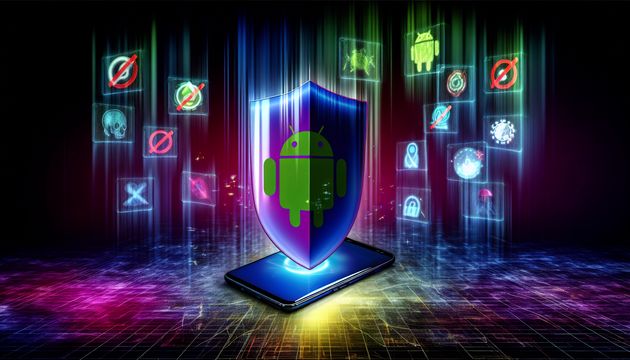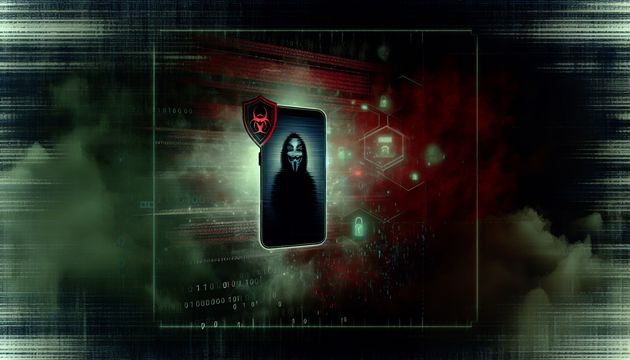
The Multifaceted Nature of Cybersecurity Breaches: Lessons from the Kloster Case
The case of Nicholas Michael Kloster offers a fascinating glimpse into the multifaceted nature of cybersecurity breaches. Kloster’s actions, which included physically breaching a nonprofit’s premises and employing a variety of technical methods to compromise their systems, highlight the vulnerabilities that exist when physical and digital security measures are not adequately integrated. By physically accessing the organization’s hardware, Kloster was able to bypass digital defenses, demonstrating the critical need for robust physical security alongside traditional cybersecurity measures (Bleeping Computer).
Techniques Employed in Cybersecurity Breaches
Physical Breach and Unauthorized Access
In the case of Nicholas Michael Kloster, one of the primary techniques used was a physical breach of restricted premises. On May 20, Kloster physically entered a nonprofit organization’s restricted area, which allowed him direct access to their computer systems. Think of it like sneaking into a locked room to access a safe—once inside, the digital locks are irrelevant. This method underscores the importance of robust physical security measures in conjunction with digital defenses. (Bleeping Computer)
Use of Boot Disks to Bypass Authentication
Once inside the premises, Kloster employed a boot disk to bypass authentication requirements on the nonprofit’s computer systems. Imagine using a master key to open any door in a building—boot disks allow attackers to start a computer without needing the usual passwords. This highlights the need for hardware-level security features such as BIOS passwords or secure boot configurations. (Bleeping Computer)
Installation of Unauthorized Software
Following the initial breach, Kloster installed a virtual private network (VPN) on the compromised systems. VPNs are like secret tunnels that allow remote access to a network. By installing a VPN, Kloster could maintain access to the nonprofit’s network remotely, even after leaving the physical premises. This emphasizes the importance of monitoring software installations and maintaining strict controls over administrative privileges. (Bleeping Computer)
Credential Theft and Account Manipulation
Kloster also changed the passwords of multiple user accounts within the nonprofit’s network. This is akin to changing the locks on a house to keep the rightful owners out. Credential theft and manipulation are often facilitated by the initial access gained through physical breaches or social engineering techniques, underscoring the need for robust password policies, multi-factor authentication, and regular audits of account activities to detect anomalies. (Bleeping Computer)
Exploitation of Stolen Financial Information
In addition to breaching networks, Kloster used stolen credit card information from a former employer to purchase hacking tools, specifically ‘hacking thumb drives’ designed to exploit vulnerable systems. This aspect of the breach highlights the dual use of financial data theft: not only can it be used for direct financial gain, but also to facilitate further cybercriminal activities. The use of stolen financial information to acquire tools for hacking underscores the interconnected nature of different types of cybercrime and the importance of protecting financial data as part of a comprehensive cybersecurity strategy. (Bleeping Computer)
Social Engineering and Deceptive Practices
Kloster’s activities also included elements of social engineering, particularly in his approach to securing cybersecurity consulting contracts. After breaching the network of a health club, Kloster sent an email to one of the gym chain’s owners, claiming he had hacked their network and offering his services to secure it. This tactic of creating a problem and then offering a solution is a classic example of social engineering, where attackers manipulate individuals into divulging confidential information or granting access under false pretenses. Such deceptive practices highlight the need for organizations to verify the legitimacy of unsolicited offers and to be wary of individuals who claim to have unauthorized access to their systems. (Bleeping Computer)
Use of Hacking Tools and Devices
The purchase and use of ‘hacking thumb drives’ by Kloster illustrate the role of specialized tools in executing cyberattacks. These devices are often preloaded with software designed to exploit vulnerabilities in target systems, automate attacks, or extract data. The availability and use of such tools lower the barrier to entry for individuals seeking to engage in cybercrime, making it imperative for organizations to implement comprehensive security measures that address both software vulnerabilities and physical threats. This includes regular updates and patches, intrusion detection systems, and employee training on recognizing and responding to potential threats. (Bleeping Computer)
Implications for Cybersecurity Practices
The techniques employed by Kloster in these breaches underscore several critical areas for improvement in cybersecurity practices. Organizations must adopt a holistic approach that integrates physical security, robust authentication mechanisms, vigilant monitoring of network activities, and comprehensive employee training programs. Moreover, the interconnected nature of different cybercriminal activities, such as the use of stolen financial information to facilitate further breaches, highlights the need for cross-disciplinary strategies that address various facets of cyber threats. By understanding and mitigating the techniques used in these breaches, organizations can better protect themselves against similar attacks in the future. (Bleeping Computer)
Emerging Technologies and Future Risks
As we move further into 2025, emerging technologies like AI and IoT present new challenges. AI can be used to automate attacks or create more convincing social engineering schemes, while IoT devices often lack robust security, making them easy targets. Organizations need to stay ahead by implementing AI-driven security solutions and ensuring IoT devices are secure by design.
Final Thoughts
The techniques employed by Kloster underscore the importance of a comprehensive approach to cybersecurity that includes both physical and digital defenses. His use of boot disks, unauthorized software installations, and credential manipulation illustrates the diverse strategies attackers can use to exploit system vulnerabilities. Moreover, the integration of social engineering tactics, such as offering security services after creating a breach, highlights the need for organizations to be vigilant against deceptive practices. By understanding these methods, organizations can better prepare and protect themselves against similar threats in the future (Bleeping Computer).
References
- Bleeping Computer. (2025). Man pleads guilty to hacking networks to pitch security services. https://www.bleepingcomputer.com/news/security/man-pleads-guilty-to-hacking-networks-to-pitch-security-services/



